Cesc Fabregas relishing his role in £1 billion plan to transform Como from minnows to giants
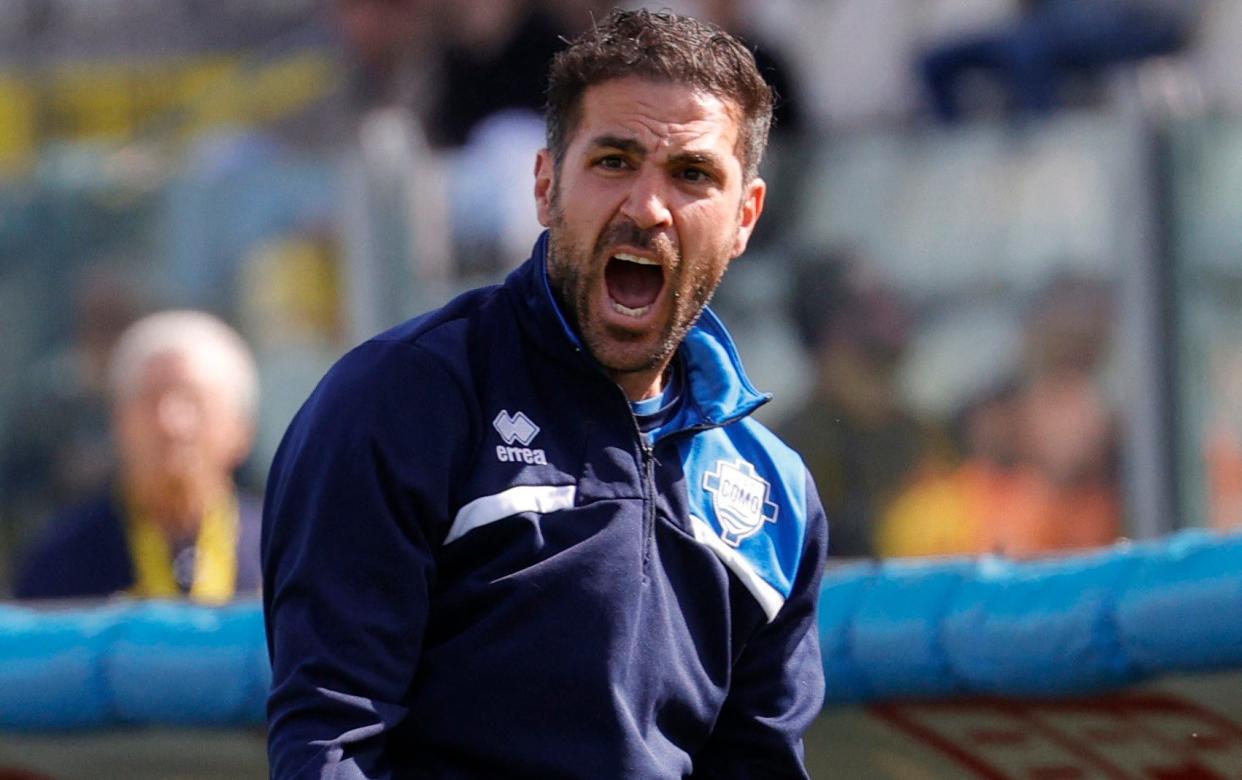
Cesc Fabregas meandering along the walkways circling Lake Como turns very few heads. After all, it is a location more than familiar with the rich and famous, and that is all part of the allure.
Boat trips across the shimmering water pass the residences of Richard Branson and George Clooney, and the area has been used for filming many Hollywood films from James Bond to Star Wars.
It is a perfect spot, then, for a footballing great – a World Cup winner with two European Championships, no less – to enjoy anonymity.
But Fabregas is not simply enjoying retirement. Far from it. He is a coach and stakeholder at Italian club Como 1907, who also boast investment from Fabregas’s former Arsenal team-mate Thierry Henry. And Fabregas’s involvement is about far more than the location.
“I saw people that wanted to grow this club, that wanted to do things the way that I always wanted to do them,” Fabregas, currently the assistant manager, tells Telegraph Sport. “It was at the beginning, so we could build pretty much from zero. That was interesting. I could play here my last couple of years, and have the opportunity to keep growing as a manager doing what I love. It was a long term project – that’s what I was looking for.”

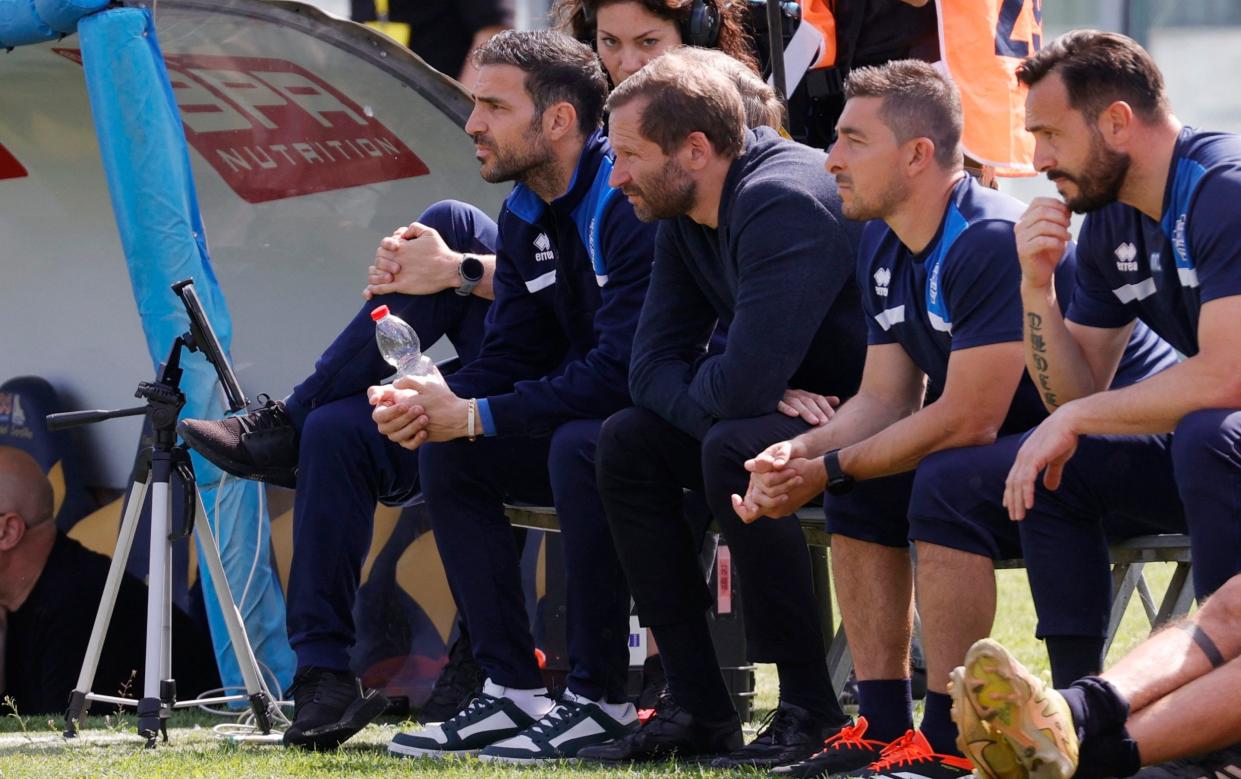
With promotion to Serie A almost secured, Fabregas’ decision to join the club two years ago has proved to be a smart one.
More minnow than giant, 1907 have, with Milan half an hour away – or at least so potential signings are told – haemorrhaged support to European behemoths Inter and AC.
Como have enjoyed 13 top-flight seasons, with the most recent in 2003, but largely they have oscillated between Italy’s second and third tiers. Bankruptcies? They’ve had a few. Relegations? Too many to mention.
From a shortlist of annus horribilis contenders, 2016-17 narrowly takes the prize. Out of business, out of professional football and into Serie D.
After a brief period under the ownership of Akosua Puni Essien, wife of former Chelsea midfielder Michael, in April 2019 the sands shifted. The Hartono brothers, via their Djarum Group (an Indonesian conglomerate with interests in tobacco, Bank Central Asia, and Mola, a streaming service and now club sponsor), purchased the club.
Debts were cleared. One promotion came within months and another, into Serie B, followed two seasons later. Dwindling gates of 400 have swelled to a steady 7,000 with around half holding season tickets.
British recruits driving Como forward
Success has been achieved with the help of a smattering of names very familiar to those who followed English – and Welsh – football.
Dennis Wise, chief executive for a period and now a consultant, orchestrated Fabregas’s arrival as a player in August 2022. Within weeks, Henry’s investment was confirmed.
On retiring aged 36 last summer, Fabregas began coaching 1907’s Primavera (Under-19) squad. Moreno Longo’s November departure led to Fabregas leading the seniors for a month – the maximum permitted by the Italian Football Federation before coaching badges are completed.
Head of development Osian Roberts joined in December, and is currently caretaker manager. Roberts was Chris Coleman’s assistant at the 2016 European Championship before a stint assisting Patrick Vieira at Crystal Palace and a development role with Qatar World Cup semi-finalists Morocco.
On match days, Roberts patrols the touchline while Fabregas sits in the trench-like dugouts. Below ground, he kicks every ball, leaping up at times to bellow instructions, occasionally smashing both hands against the roof in frustration. His role in Serie A next season could be even more prominent.
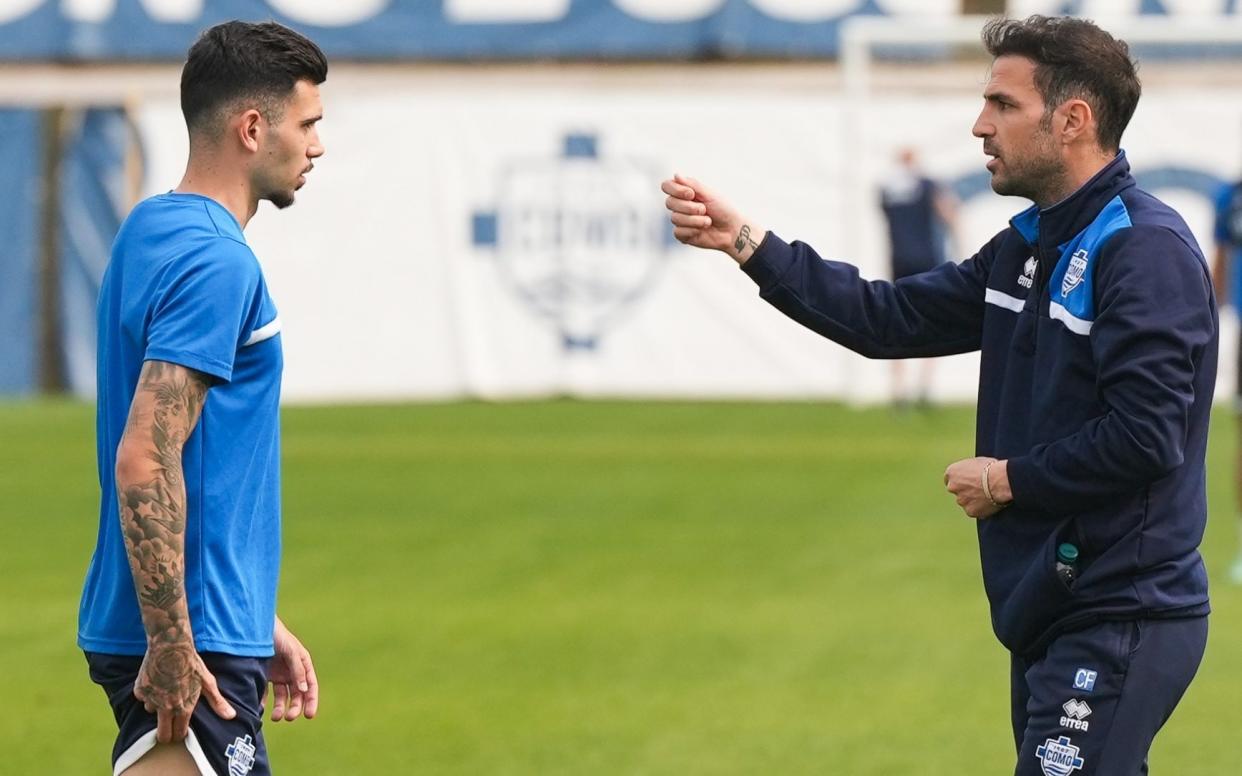
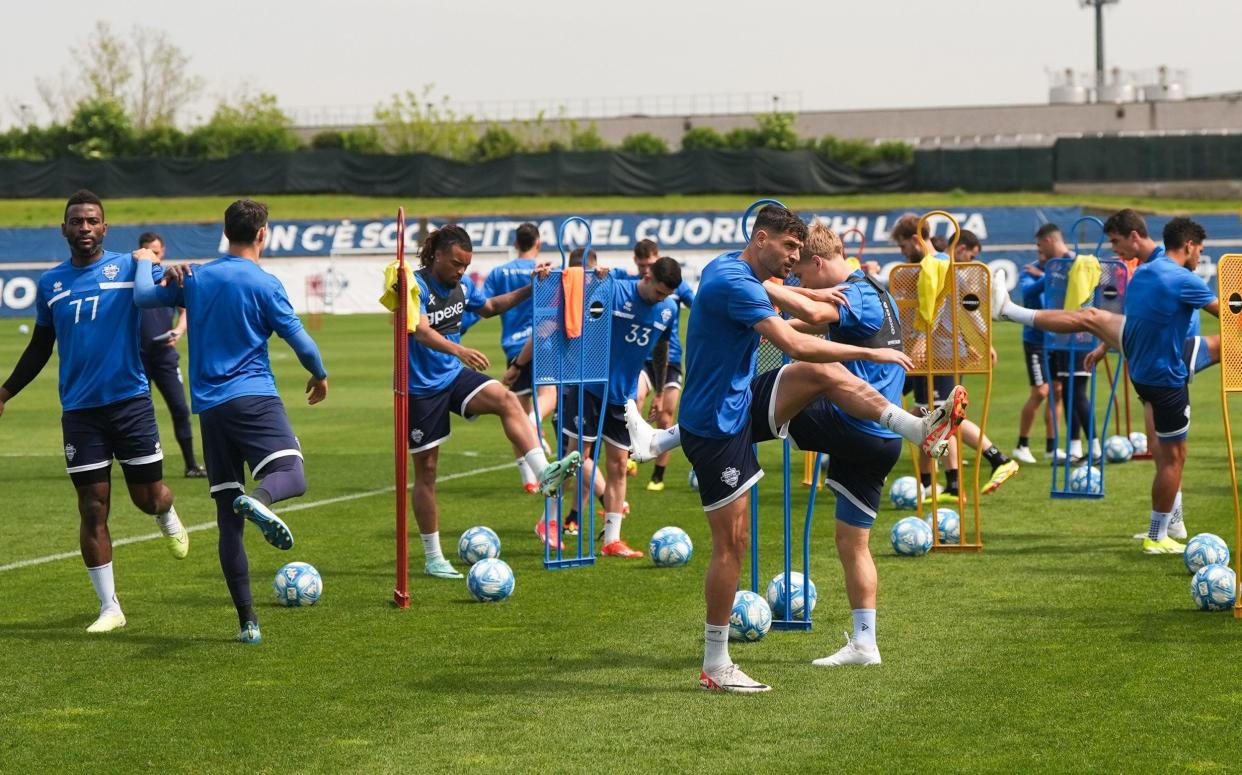
Fabregas retains a boyish demeanour, despite the stubble. It is hard not to think back to the 16-year-old who made fools of Premier League stalwarts and picked passes others could not even imagine.
Mid-drill at 1907’s Mozzate training complex, he pauses. He gesticulates towards a pair of onlookers 200 yards away on a bridge above huge letters reading “Non c’è sconfitta nel cuore di chi lotta” or “There is no defeat in the heart of those who struggle”.
“Always the same people,” he yells in English. Photographic evidence will later help staff ascertain if they are rival spies, or just keen fans.
Fabregas’ transition exercise continues. “This is the stuff we need to get automatic.” His voice remains soft yet carries, and he flits effortlessly between multiple languages.
A poor touch. “No problem.” Some elite footballers struggle in coaching simply because their players cannot perform the feats they were capable of. It does not appear the case here.
Fabregas transforming style of play
His flexibility has impressed colleagues and, since he began coaching the first team, 1907’s possession and attacking numbers have improved massively – perhaps expectedly so, given his grounding at Arsenal and Barcelona, but Fabregas insists that no one philosophy trumps all. “Football is constantly moving in different directions and you need to be ready to press each button at each time,” he begins.
“You need to analyse how the opponent plays; what they do; where are the spaces; what are their dynamics. And with your philosophy, you must analyse the way you want to play, what’s best, and what role everyone needs to play. You also need players that understand the way you want to play, otherwise you need to adapt to them.”
After training, Fabregas returns to his office upstairs in a modest but smart new clubhouse. There he remains until sunset, lifting every stone, considering every angle.
When Telegraph Sport arrived four hours earlier, Fabregas had already been tucked away in there for hours. During lunch, Fabregas explains how lockdown afforded him, for the first time in his adult life, breathing space. Recalling an extended period with his wife and children, an endearing smile appears – long hours away from them is the lone downside to his current role.
Fabregas also used that time to cultivate coaching knowledge from his formidable contacts book. By then, he had swapped Chelsea for Monaco. When football restarted, manager Niko Kovac allowed him to operate in his shadow. Mikel Arteta’s support has also been invaluable, while a career spanning 738 club games and 118 international caps provides decent foundations.
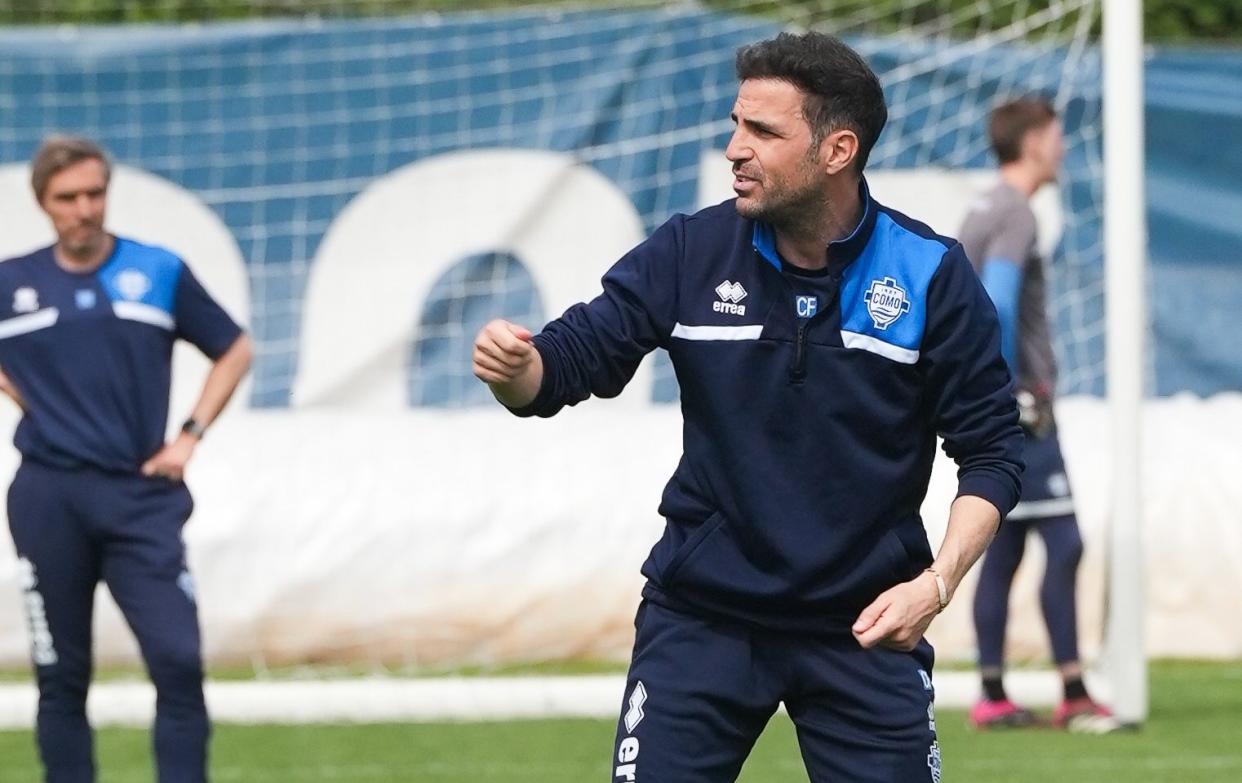
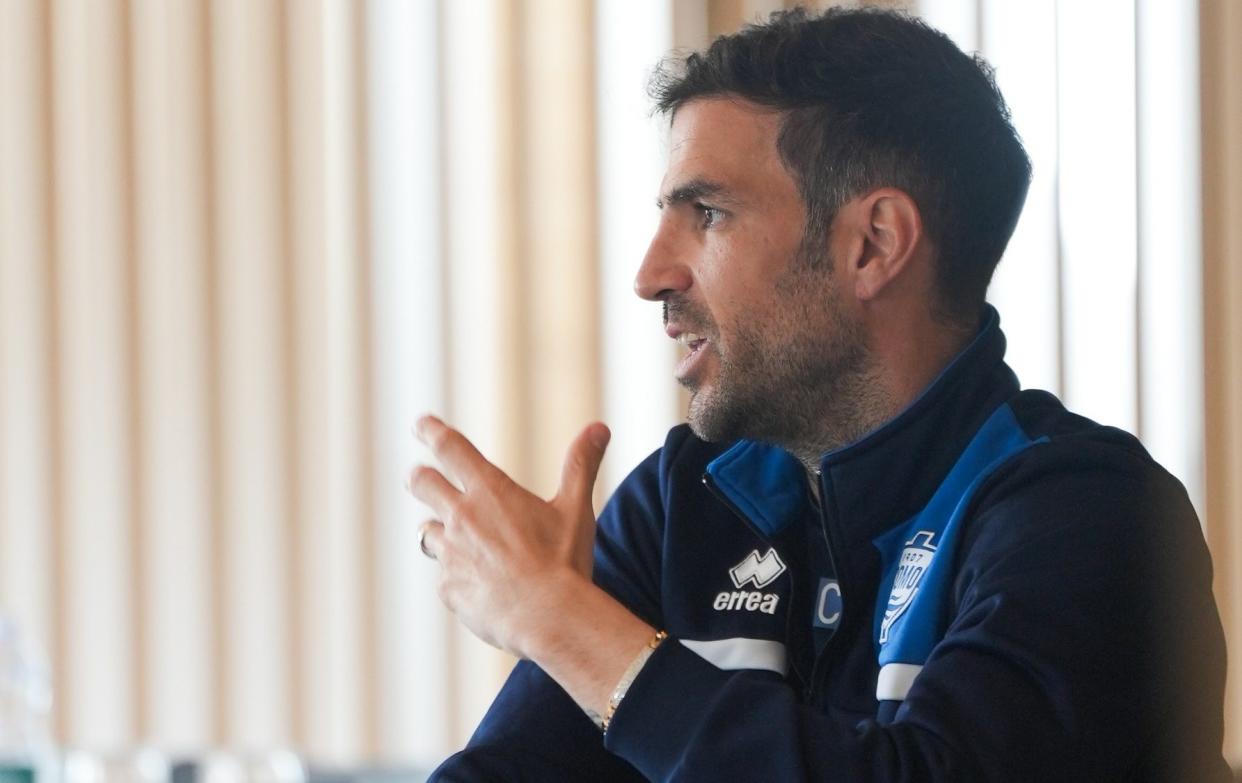
He explains: “I always knew after a meeting if the players enjoyed it or not. It’s about understanding certain situations, certain moments, because at the end of the day, it’s about managing situations. And managing people.
“The tactics, yes, of course it’s very important. We have to work on the pitch. But managing different situations at different moments and different people – that’s the most tricky.”
“I always want people that are better than me around,” he adds. “You can be the main person, the ‘image guy’ in anything you do in life, but to keep growing, I always believe you need better people around you.”
The conversation turns to Roberts. “Osh is fantastic. He always gives you different views – not opinions because we see football the same way – but when I’m looking at something he will look at things from another perspective that challenges me. I love it because it makes your brain work 24/7 in 360 degrees.”
Coaching guru Roberts managing bigger picture
Roberts may well be the most famous football coach that you have not heard of. Within the game, his reputation is as wide as his near-permanent grin. Bielsa-esque in some ways, disciples make pilgrimages to study his ways. This week they include Michael Flynn, the former Swindon manager, and Joe Ledley, the former Crystal Palace and Wales midfielder.
Roberts is credited with establishing and developing everything underpinning Wales’ recent footballing success.
He was recruited by Como, primarily to future-proof the project’s football element, by two close friends: Henry, and Darren Dein, son of former Arsenal owner David, who is agent to both Henry and Fabregas.
“There aren’t many projects this exciting in global football at the moment,” Roberts says, whose Henry link came via Marcel Desailly. For many years, Roberts, as part of his role as the Welsh Football Association’s technical director, oversaw the A licence course with Ian Rush. Desailly was star pupil number one, and from him Roberts’ reputation grew “by word of mouth. Marcel was like a father to the young French players: Thierry, Patrick Vieira, David Ginola. If he said to do something, they did it.”
Arteta, Jens Lehmann and Freddie Ljungberg are also amongst his alumni, with Fabregas the latest beneficiary.
Running coaching courses was part of Roberts’ role. “It won’t be a ‘copy and paste’,” Roberts says when asked how he will approach his assignment at Como. “When I went to Morocco, I could easily have taken top coaches, people I’d worked with and been ‘Brits abroad’ in the Moroccan federation. I’ve never believed in that.”
Instead, Roberts conducted a painstakingly detailed application process, and, looking to the future, local coaches were given junior roles. “A manager’s job is to look three matches ahead, a technical director’s is to look 10 years ahead.”
Time, though, is a precious commodity. “It’s essential everybody knows where we want to go, how we’re going to get there, what it’s going to take,” Roberts says.
“Maybe the owners want to get there tomorrow, and that’s where we have to be aligned. Having owners that want to get there quickly means it’s really exciting. But we’ve got to make sure it’s sustainable, and to do that, we’ve got to make sure we can back it up, so that when we do achieve and get there, we can stay there.”
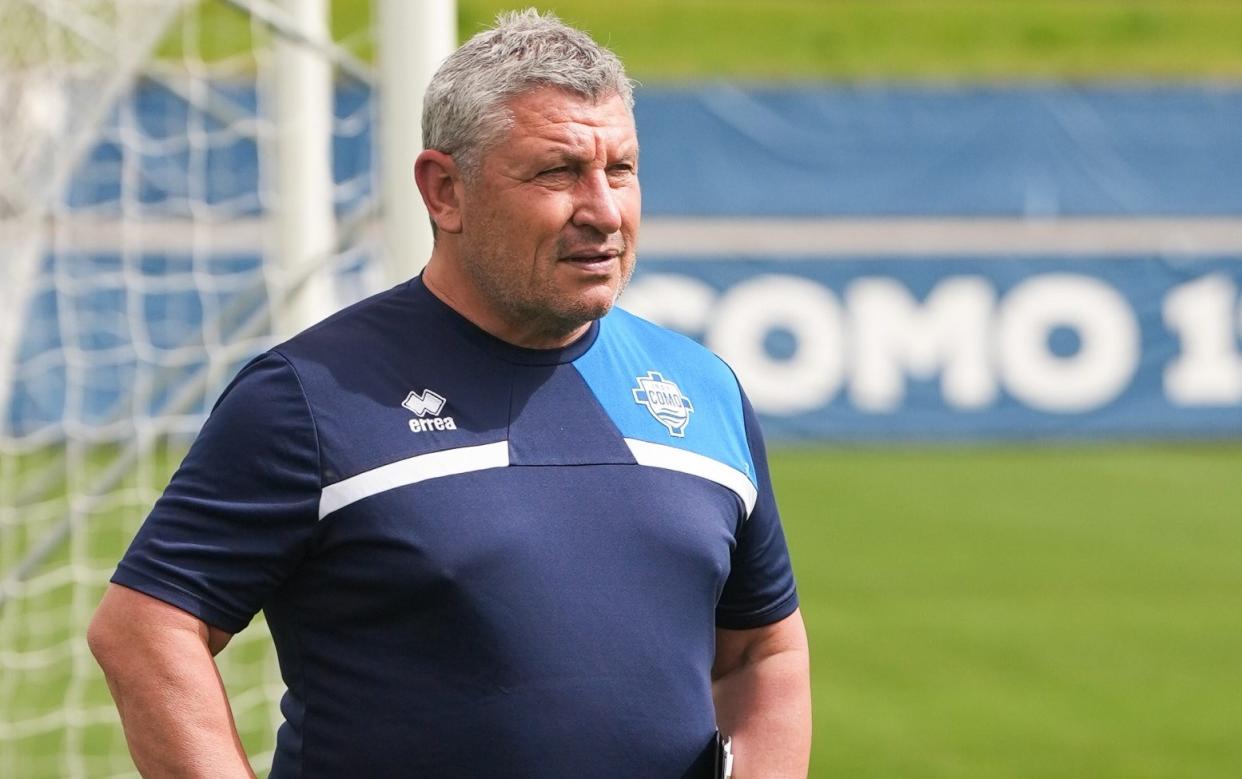
Roberts carries himself with a reassuring calmness. He recalls the names of every player’s family, enquiring over the wellbeing of newborns, or asking after partners before talking football.
And nothing phases him, a necessary quality at 1907. He barely flinches when told the club will be live-streaming a wedding from the stadium on match day, nor at the prospect of having to judge a competition for Americans vying to win a chance to study in Como and a Primavera (U19) scholarship.
Como’s owners, as Roberts puts it, have “high-end aspirations”. Those include European football and turning the club into a billion-pound brand with a global fanbase. Doing that while remaining in the community’s heart is a Bond-esque balancing act.
Every league fixture this season has been streamed for free to the US and the UK on Como TV. In London, a luxury travel range is available in Harrods, while across the pond the club is sending a side to compete in the ‘The Soccer Tournament’, a seven-a-side all-star event with a $1 million dollar prize. Sergio Aguero and Nani are both taking teams. Next year, they are leaning into American children’s favourite pastime with the launch of the Lake Como Soccer Camp. Retail revenue has increased more than 9,000 per cent in just two years, albeit from a low starting base.
'Forza Como, magical Como
Our faith that we'll never betray' 🤍💙 pic.twitter.com/zY11NM5a7b— Como1907 (@Como_1907) May 1, 2024
Of equal importance to the global expansion is, as Roberts says, “having strong community links, developing a club that the city is proud of. They’ve probably lost a generation of fans by being down in the doldrums. Now it is on the up.”
Sceptics might cry lip service, but the evidence points otherwise. Players regularly film content promoting independent restaurants. Local shops can become ‘touchpoints’, allowing them to sell merchandise and receive a slice of the overall commission. An investment in a nearby brewery has resulted in it supplying match-day drinks.
Every Friday, coaches and players run a training session for children with learning disabilities. The away strip carries the name of a charity combating childhood leukaemia set up in memory of a Lombardy youngster.
And to prevent further generations of lost supporters, parents with newborns can claim a free baby-grow. Keeping that “Como DNA”, as Roberts refers to it, is vital.
On the football side, for every Fabregas there is Massimiliano Gatto, a 28-year-old coach and the top-scorer during the 2021 Serie C promotion season forced to retire by injury.
For every Roberts, there is a Giancarlo Centi, holder of the club’s appearance record and now Primavera manager. For every Ian Torrance, the recently arrived former Southampton head of recruitment, there is a Patrick Cutrone.
Cutrone, a 26-year-old striker, spent time with Milan and Wolves. Serie B is below his level but after his father died, he simply wanted to come home. His name draws the loudest cheer on match day.
There is a smattering of players who have experienced higher levels but both captain Alessandro Bellemo and his vice-captain Alessandro Gabrielloni have risen with 1907 from Serie D. The squad’s make-up is reflected by the wage bill, which is comparable with others in the top half of their division. Wrexham in the National League it is not.
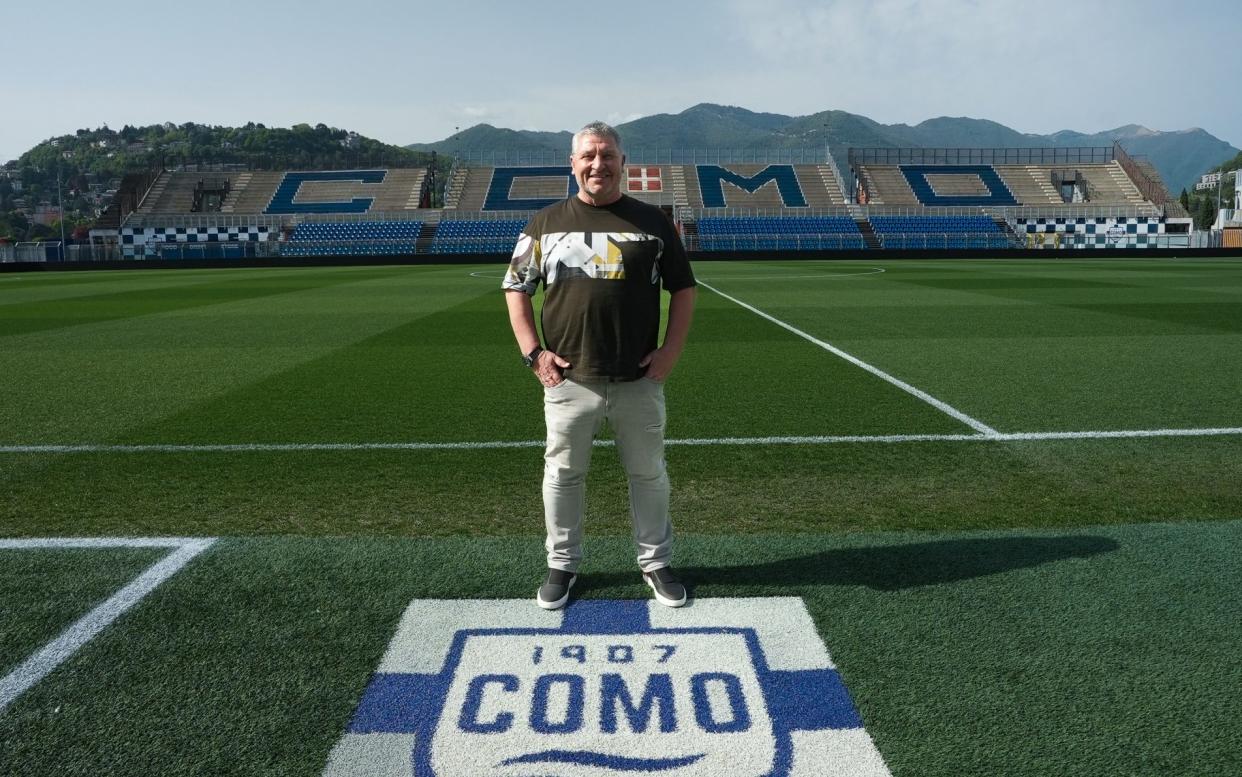
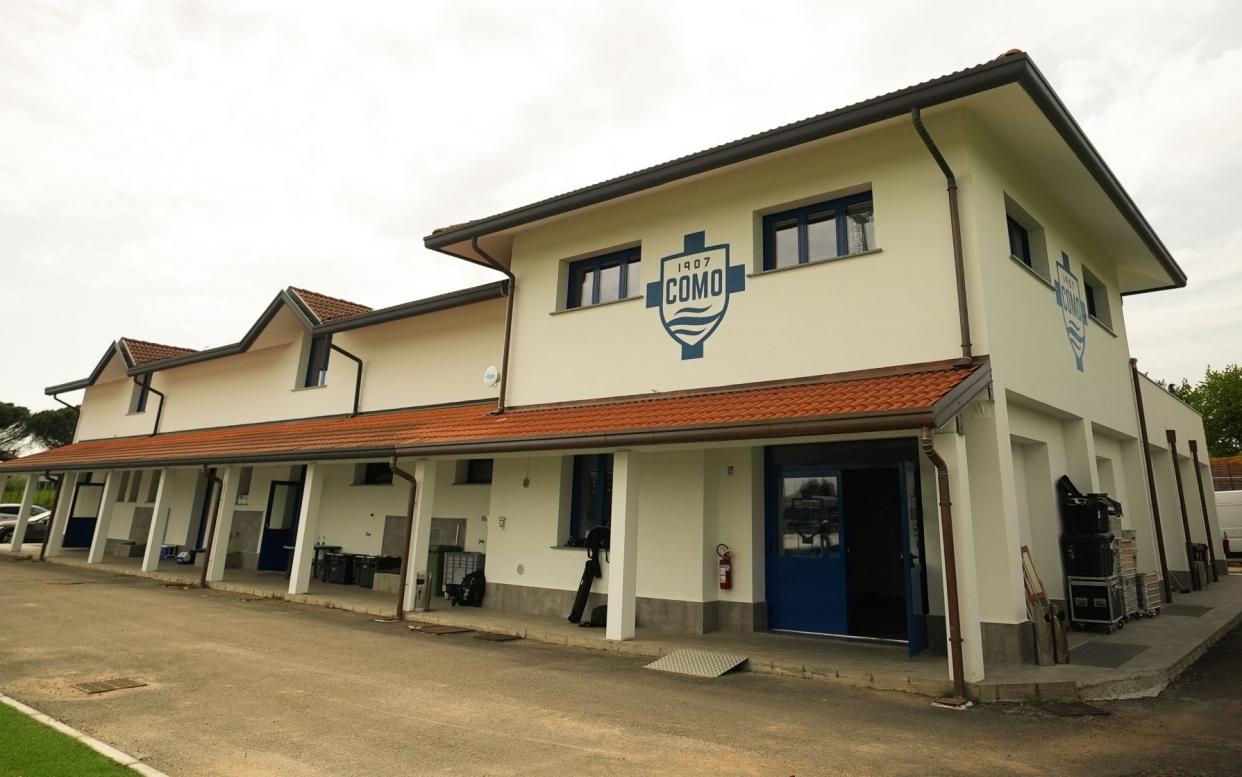
The Stadio Giuseppe Sinigaglia has stood metres from Lake Como since 1927. It is, in parts, crumbling, far more shabby than it is chic. But it is beautiful and as far removed from a soulless modern bowl as possible. Nominally holding 12,000 fans, health and safety restricts actual capacity to 8,028, well below the 10,000 Serie A minimum.
Pre-game the players relax in a giant room that has the odour and appearance of a 1980s gym, while to reach the pitch they first descend into a giant concrete tunnel, the walls graffitied with the faces of celebrated former players Marco Tardelli, Gianluca Zambrotta and Stefano Borgonovo.
Fifty yards away, the water laps serenely, rippling only when disturbed by landing floatplanes.
Supporters gather in a bar outside the neighbouring yacht club before the Ultras make their way to the Curva stand, where they are at mercy of the elements. As compensation, the Como-Brunate funicular is in perfect view.
‘Ci Credo’ (I believe), read Henry’s text after last Wednesday’s stoppage-time winner over Cittadella. With promotion all-but secured, it turns out he was right to.


